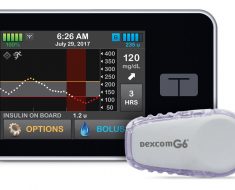In a landmark study, researchers found that patients treated with paramedic oxygen delivery using a newer, more flexible laryngeal breathing tube may have a greater survival rate after sudden cardiac arrest than the traditional intubation breathing tube.
Funded by the National Heart, Lung, and Blood Institute (NHLBI), the study is the largest of its kind to test oxygen delivery methods used by firefighters, emergency medical technicians and paramedics. The study was presented at the 2018 Society for Academic Emergency Medicine meeting in Indianapolis, Indiana by lead author Henry E. Wang, M.D., M.S., professor and vice chair for research in the Department of Emergency Medicine at McGovern Medical School at The University of Texas Health Science Center at Houston (UTHealth).
“For over three decades, emergency medical services personnel in the U.S. have performed intubation to deliver oxygen into the lungs of cardiac arrest victims. While identical to techniques used by doctors in the hospital, intubation in the prehospital setting is very difficult and fraught with errors,” Wang said. “Our trial showed that cardiac arrest patients treated using the newer and easier laryngeal tube device may have a higher survival rate.”
Sudden cardiac arrest, or loss of mechanical activity of the heart, is usually caused by a heart attack. More than 400,000 individuals are treated for out-of-hospital cardiac arrest each year, with the vast majority occurring at home, according to the American Heart Association. Studies show that only about 10 percent of people who suffer cardiac arrest outside the hospital survive. Delivery of oxygen to the lungs is a critical part of reviving a patient from cardiac arrest.
The multicenter research study—Pragmatic Airway Resuscitation Trial—compared survival rates among 3,000 adults with cardiac arrest treated by paramedic crews from 27 emergency medical services (EMS) agencies from December 2015 to November 2016. Approximately half received the newer laryngeal tube (LT) airway, while the other half received traditional endotracheal intubation. The study (NHLBI grant UH2/UH3-HL125163) was conducted by the Resuscitation Outcomes Consortium research network and included the Birmingham, Dallas-Fort Worth, Milwaukee, Pittsburgh and Portland communities.
Overall, survival was higher in the LT than the standard intubation group. In the LT group, 18.3 percent survived three days in the hospital, while in the intubation group, 15.4 percent survived three days. A total of 10.8 percent in the LT group survived to reach hospital survival, while 8.1 percent in the intubation group reached hospital survival. The proportion of patients surviving with good brain function was also higher for LT than standard intubation.
“This is the first randomized trial to show that a paramedic airway intervention can improve cardiac arrest survival,” Wang said. “Based upon these results, use of the newer LT devices could result in more than 10,000 additional lives saved each year.”
Source: Read Full Article





